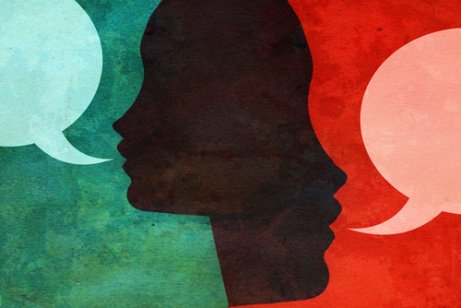Expressive Language Disorder in Children

Expressive language disorder is a language difficulty that in no way affects a child’s ability to comprehend speech. In other words, children with this disorder have a hard time speaking and writing. However, they still understand spoken language.
This disorder appears in children between the ages of 2 and 4, but is most likely to appear at age 2. The percentage of cases falls between 3% and 5% of the total infant population.
The main characteristics of expressive language disorder is the extreme simplicity with which children express themselves orally. They have limited resources and often omit words and structures when constructing their ideas.
Children who experience expressive language disorder don’t hold conversations. This is due to the fact that they can’t maintain the fluidity of their words. Even though they understand what they hear, they have a hard time elaborating and expressing language.
Experts are still unclear of what exactly causes expressive language disorder. However, they believe that the origin is genetic, physical or both. It’s believed that brain damage and malnutrition can be contributing factors as well.

The characteristics of expressive language disorder
- Excess simplicity when forming phrases, sentences and expressions.
- Avoids speaking to avoid having to construct discourse.
- Incorrect use of verb tenses (present, past, and future).
- Uses a reduced number of words.
- Unusual ordering of words.
- Difficulty in remembering words.
- Grammatical omissions.
- Shortened phrases.
- Limited vocabulary.
Children with expressive language disorder are often perceived as being shy or withdrawn because they’re so quiet. However, they may not be shy at all, but rather prefer not to express themselves out loud. Their silences is a method of avoiding elaborating phrases or articulating and pronouncing words.
In academic settings, these children often avoid talking in class. For example, if the teacher asks a question or suggests an oral activity, the child will choose to abstain.
Since these children’s communication is so limited, it’s hard to understand them clearly.
While reading, children with expressive language disorder can pay perfect attention. However, they cannot read out loud coherently. They make mistakes and have difficulty expressing the complete written message. If they attempt to express it orally, the information won’t make sense.
Recommendations and treatment
Unfortunately, children with expressive language disorder may be made fun of by their peers. That’s why it’s very important that parents and adults take measures to protect their self-esteem.
The first thing parents should do is make teachers aware of the issue and what it implies. This way, teachers will have the information they need and not place unnecessary pressure on these children. At the same time, they’ll work to prevent any other children from making fun of them.
For example, they’ll invite classmates to be patient when children with expressive language disorder speak out loud in class. Teachers will positively reinforce this patience, as well as children with the language disorder for their courage and progress.
At home, parents should encourage their children to read out loud (short texts). However, this should always take place in a happy and fun context so the children won’t interpret it as a sort of punishment.
The idea is to persevere in activities that will bring children to improve their skills little by little. In time, children’s abilities to use language correctly will improve.
Parents and teachers should never punish or reprimand children for their mistakes. Rather, they should use creativity and patience as their closest allies. Some parents hold karaoke sessions with their little ones to correct their mistakes in a more playful setting.

If a child is displaying difficulties in the expression of speech, parents should seek professional help for diagnosis and treatment. It’s very important for parents and teachers to follow the indications that professionals provide.
At the same time, adults must provide support and promote self-acceptance – and this will be part of the treatment. Therapy should continue until the problem no longer exists.
At the same time, parents should seek to compensate for any nutritional deficits and provide a balanced diet. In this case, we recommend seeking the advice of a pediatrician or pediatric nutritionist.
Prognosis
If you apply all of the above recommendations and are consistent with therapy, your child will overcome this difficulty over time. Of course, every case is unique, and adults should respect their child’s particular pace.
Remember, this isn’t a race. Your child’s success will depend on the application of positive techniques and, of course, your patience and support.
Expressive language disorder is a language difficulty that in no way affects a child’s ability to comprehend speech. In other words, children with this disorder have a hard time speaking and writing. However, they still understand spoken language.
This disorder appears in children between the ages of 2 and 4, but is most likely to appear at age 2. The percentage of cases falls between 3% and 5% of the total infant population.
The main characteristics of expressive language disorder is the extreme simplicity with which children express themselves orally. They have limited resources and often omit words and structures when constructing their ideas.
Children who experience expressive language disorder don’t hold conversations. This is due to the fact that they can’t maintain the fluidity of their words. Even though they understand what they hear, they have a hard time elaborating and expressing language.
Experts are still unclear of what exactly causes expressive language disorder. However, they believe that the origin is genetic, physical or both. It’s believed that brain damage and malnutrition can be contributing factors as well.

The characteristics of expressive language disorder
- Excess simplicity when forming phrases, sentences and expressions.
- Avoids speaking to avoid having to construct discourse.
- Incorrect use of verb tenses (present, past, and future).
- Uses a reduced number of words.
- Unusual ordering of words.
- Difficulty in remembering words.
- Grammatical omissions.
- Shortened phrases.
- Limited vocabulary.
Children with expressive language disorder are often perceived as being shy or withdrawn because they’re so quiet. However, they may not be shy at all, but rather prefer not to express themselves out loud. Their silences is a method of avoiding elaborating phrases or articulating and pronouncing words.
In academic settings, these children often avoid talking in class. For example, if the teacher asks a question or suggests an oral activity, the child will choose to abstain.
Since these children’s communication is so limited, it’s hard to understand them clearly.
While reading, children with expressive language disorder can pay perfect attention. However, they cannot read out loud coherently. They make mistakes and have difficulty expressing the complete written message. If they attempt to express it orally, the information won’t make sense.
Recommendations and treatment
Unfortunately, children with expressive language disorder may be made fun of by their peers. That’s why it’s very important that parents and adults take measures to protect their self-esteem.
The first thing parents should do is make teachers aware of the issue and what it implies. This way, teachers will have the information they need and not place unnecessary pressure on these children. At the same time, they’ll work to prevent any other children from making fun of them.
For example, they’ll invite classmates to be patient when children with expressive language disorder speak out loud in class. Teachers will positively reinforce this patience, as well as children with the language disorder for their courage and progress.
At home, parents should encourage their children to read out loud (short texts). However, this should always take place in a happy and fun context so the children won’t interpret it as a sort of punishment.
The idea is to persevere in activities that will bring children to improve their skills little by little. In time, children’s abilities to use language correctly will improve.
Parents and teachers should never punish or reprimand children for their mistakes. Rather, they should use creativity and patience as their closest allies. Some parents hold karaoke sessions with their little ones to correct their mistakes in a more playful setting.

If a child is displaying difficulties in the expression of speech, parents should seek professional help for diagnosis and treatment. It’s very important for parents and teachers to follow the indications that professionals provide.
At the same time, adults must provide support and promote self-acceptance – and this will be part of the treatment. Therapy should continue until the problem no longer exists.
At the same time, parents should seek to compensate for any nutritional deficits and provide a balanced diet. In this case, we recommend seeking the advice of a pediatrician or pediatric nutritionist.
Prognosis
If you apply all of the above recommendations and are consistent with therapy, your child will overcome this difficulty over time. Of course, every case is unique, and adults should respect their child’s particular pace.
Remember, this isn’t a race. Your child’s success will depend on the application of positive techniques and, of course, your patience and support.
All cited sources were thoroughly reviewed by our team to ensure their quality, reliability, currency, and validity. The bibliography of this article was considered reliable and of academic or scientific accuracy.
- Aguilera Albesa, S., & Busto Crespo, O. (2012). Trastornos del lenguaje. Pediatria Integral.
- Coloma Tirapegui, C. J., Cárdenas Gajardo, L. R., & De Barbieri Ortiz, Z. (2005). Conciencia fonológica y lengua escrita en niños con trastorno específico del lenguaje expresivo. Revista Cefac, 7(4). https://www.redalyc.org/html/1693/169320507004/
- Fresneda, M. D., & Mendoza, E. (2005). Trastorno específico del lenguaje: Concepto, clasificaciones y criterios de identificación. Revista de Neurología, 41(1), 51-56. https://57795f14-a-62cb3a1a-s-sites.googlegroups.com/site/cofoniv/Telconceptoclasificacionesycriterios.pdf?attachauth=ANoY7coyTtAyZvvuR5UrYWWSy8yNupEZzWISo5B3XrrC64oz2Pw22F5YNPTG2WOQtPvr0TdD7NZVbl2byX7-1OZpiPKbMbdy0NrU5u9YdzyUO98Z3Bf9Oxf8HfPP71GlsaRnwPHNpwqR7XADLu_vMMli6HV4TDOizkgDiFPAvVuhMFK4jKfCusR73VBJkHkp93FiyyEe46ZIc-1USb0_bGqllWOT7PQ3KvPxkXJ_7fP9KuYutg4yT4I%3D&attredirects=0
This text is provided for informational purposes only and does not replace consultation with a professional. If in doubt, consult your specialist.








